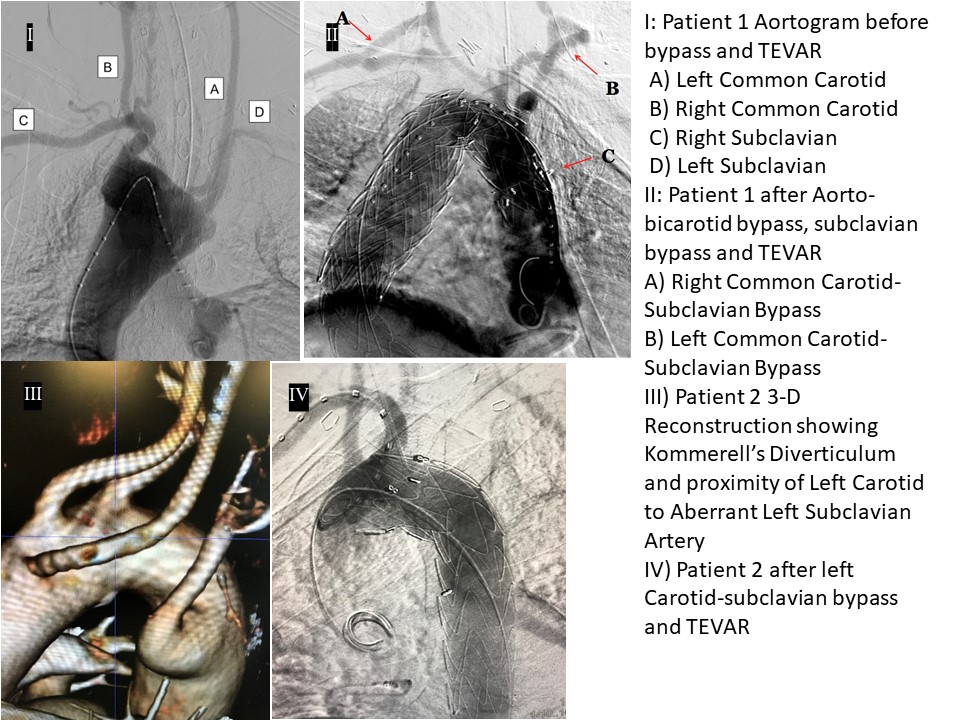Single-Staged, Hybrid Repairs in Two Patients With a Right-Sided Aortic Arch, Aberrant Left Subclavian Artery and Kommerellís Diverticulum
Joel Crawford, M.D., Ritu Aparajita, M.D., Adam Sagarwala, D.O., Ossama Reslan, M.D., Cindy Sturt, M.D., Mark Russo, M.D., Bruce Brener, M.D..
Newark Beth Israel/Saint Barnabas Medical Center, West Orange, NJ, USA.
Objective. A right-sided aortic arch (RSAA) is a rare congenital anomaly with an incidence of 0.05% to 0.1%. . RSAA commonly occurs with aneurysmal development at the origin of an aberrant left subclavian artery, known as Kommerellís diverticulum. Repair of this anomaly has taken various forms.. Thoracotomy and median sternotomy have been the standard open approaches for repair. With the advancement of endovascular treatment of various thoracic aortic diseases, reports of repair of a RSAA with classic Kommerellís diverticulum have been described using endovascular or hybrid endovascular techniques with great success. This report confirms the feasibility of a single staged hybrid approach to RSSA with varying degrees of complexity.Methods. This study is a retrospective review of two patients treated recently, utilizing a single staged hybrid approach. Results. The first patient had aneurysmal degeneration of the thoracic aorta and a dissection necessitating deployment of the endograft in Zone 0 (Figure). A median sternotomy, ascending aorta to bilateral carotid artery bypass, bilateral carotid to subclavian bypasses, retrograde endograft deployment and embolization of the proximal subclavian arteries were performed in a single stage. The patient experienced preoperative right arm weakness and chest pain which eventually resolved. The second patient noted difficulty breathing and swallowing and was found to have a RSAA, aberrant left subclavian artery and Kommerellís diverticulum (Figure). This patient required only a left carotid subclavian bypass, thoracic endograft and embolization in one stage. Both patients continue to do well. 
Conclusions. Various reports describe open and endovascular repair of this rare anomaly. While endovascular repair is usually possible and commonly recommended, some uncertainty exists about the safety of a single stage compared to multiple staged procedures. This brief report demonstrates the safety of a single stage operation in properly chosen patients, but does not negate the usefulness of separating the operations, particularly in higher risk patients.
Back to 2019 Abstracts
